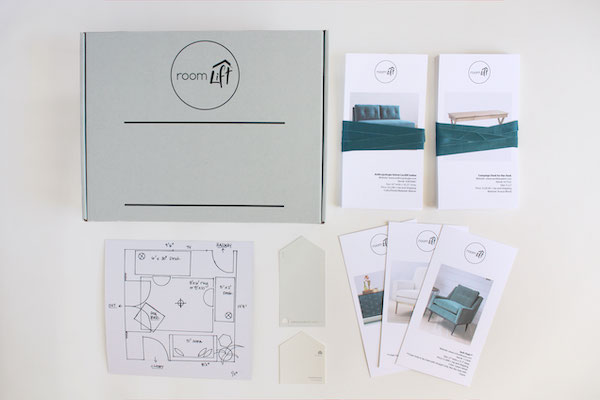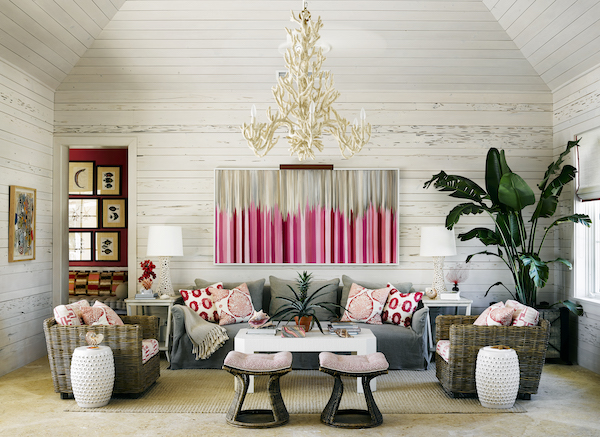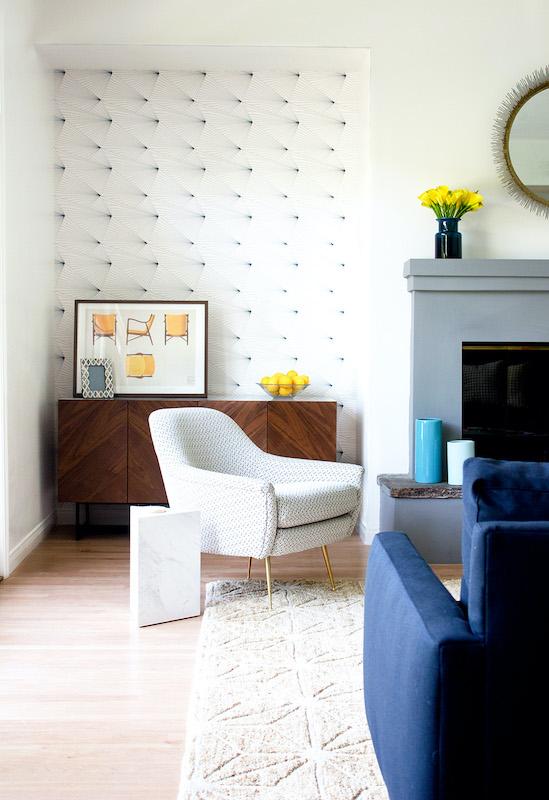For many people, bringing a designer into their home to create a design, select products and coordinate installation is a luxury. Home reno television and aspirational Pinterest boards have put well-designed lifestyles at the forefront of savvy consumers’ minds. Over the last few years, e-design platforms have popped up across the internet, to varying degrees of success, making design more accessible to the masses. These platforms offer a budget-friendly entry to professional design targeted toward those for whom hiring a full-service firm might not be attainable. But among these sites are some doing things a bit differently, offering the perks of hiring boutique, elite interior design firms without the hefty price tag.
Out of the Box
Megan Hersch owns the Los Angeles-based Studio MG Interiors, a 10-year-old interior design firm specializing in high-end residential design. In 2017, Hersch entered the online design space, starting the boutique e-design site roomLift in addition to her full-service design business.
“I was doing one of those reflective, ‘What are you going to do in the next 10 years?’ things,” Hersch says. “I was looking at the parts of the business that I love, which are designing and shopping and creating spaces that are great for people and that people love, and the parts that I don’t love, which are the bookkeeping and the sales tax paying and the waiting for the furniture to show up. I also was looking at a lot of Pinterest for projects that I happened to be working on, and I realized pretty quickly that there’s so much design inspiration out there now, now that everything is online.”
roomLift clients fill out a questionnaire detailing their budget, style preferences, and other general questions about their use for the space; they also upload photos. Hirsch then creates an initial sketch of the space and asks the client for more specific measurements of certain areas of the room. Two to three weeks later, the client receives a box in the mail with a scaled floor plan and informational cards with photos of furniture options and details on where to purchase it, as well as paint, wallpaper and fabric swatches.

“I’ve found so much that printing the pictures and taking it off the computer screen, especially when you’re doing a whole space, made it so much more attainable and easier for everybody,” Hersch said. “but especially for people who don’t have a design background, to hold up that blue couch and then the three different rug options and put it in your space and live with it for a couple of days, to sort it around your coffee table or show it to your friends.”
Hersch gives customers a few options for each piece, and is careful to detail whether the customer should purchase from a brick-and-mortar store or if it’s safe to order online. If a customer specifies they’re looking for comfort, for example, Hersch will tell them which sofas to try out in a store so they can be confident in their decision rather than order something online that they will have to return later.
Aiming for Perfection
Interior and textile designer Kathryn M. Ireland has been immersed in the international worlds of film, fashion and design for decades, and as a result has garnered expertise, respect and close friends in the industry. In her latest endeavor, The Perfect Room, Ireland has harnessed all three of these pieces to create an online design platform that allows customers access to a curated selection of A-list designers.
“I really wanted to take my business, the old-fashioned template of an interior design business, and see how we could put it online,” Ireland said. “And then I realized it’s so much more interesting if it’s not just me, but it’s a group of people because then you can offer many different looks. Obviously if we were going to be able to scale this business, we were going to have to have a lot more to offer than just my look. You can see Robert Stilin’s rather clean, slightly more masculine look; Martyn [Lawrence Bullard]’s sort of ethnic-inspired look; or mine, which has a California country meets English country look.”
Currently, 12 designers have rooms featured on the site (“Basically I just went to my nearest and dearest,” Ireland says of her designer selections.), including Jeffrey Alan Marks, Jane Churchill, Timothy Corrigan, Jeffrey Bilhuber, and Ireland herself. Each designer has their own room designs through which customers can scroll to find one that matches their style and budget. Below the photo of the completed room is a list of products that are shoppable from the site. Customers can purchase one item, a few items or the entire room. The Perfect Room handles all the logistics, including shipping and white glove delivery.

The site also offers design packages in which a designer will help create customized floor plans based on the inspirational rooms on the site. The Perfect Room employs designers around the country with at least 10 years of design experience, many of whom have completed one of Ireland’s design boot camps or retreats. The elite designers are also available to consult for a premium price.
Both roomLift and The Perfect Room carry higher introductory prices than most e-design sites. roomLift client’s are benefiting from the boutique services of Hersch’s full-service business — right now, Hersch is the only designer on staff — while The Perfect Room’s draw comes from its roster of elite designers and access to trade-only goods.
Still, these services give customers many of the perks of working with an interior designer, without the price.
“I realized that previously interior design was such a to-the-trade business and there was a lot of privilege associated with it,” Hersch says. Quality products are now available at the retail level, and Hersch helps her clients sort through all the noise to find what they need and can purchase themselves. A customer still might end up spending $100,000 on furnishings, she says, but they’re saving thousands by not hiring a designer. Some retailers also offer discounts to roomLift customers.
There are perks to buying through The Perfect Room’s site as well.
“If you buy one piece, [the price] is going to be retail,” Ireland says. “The more you buy, the better price you’re going to get. But also at this point we’re not identifying the manufacturers. We’re very much trying to keep the products unique, to the point that customers can’t go and shop them on their own.”
No matter the discounts or added value options, both sites offer the expertise of professional designers, and both have plans to bring more designers into their virtual folds. Hersch hopes to bring guest designers into roomLift in the future, while Ireland wants to get some up-and-coming designers on board at The Perfect Room.
Ireland sees this type of high-end online design as the way of the future, particularly for those with limited time, whose lives are spent on the internet. She acknowledges that some customers do still want to see and feel their furnishings in person, but others would prefer to do the legwork online.
“I think people are just obsessed with their smartphone,” Ireland says. “Now when you go to a doctor’s office, you don’t pick up a magazine and read it. You go to your phone, you go to Instagram, you’re shopping for something. That one thing you hold in your hand has become your whole life, for good or bad. I think that that’s why people are turning to [online design], because the magazines are getting thinner and thinner, less and less inspirational, but you can go to the internet or you can go to Pinterest. There are so many different ways to do things, maybe it’s too many ways to do things, but that’s where we are today. So I think it’s the idea of, let’s see how we can all be part of this because we don’t want to get left behind.”







